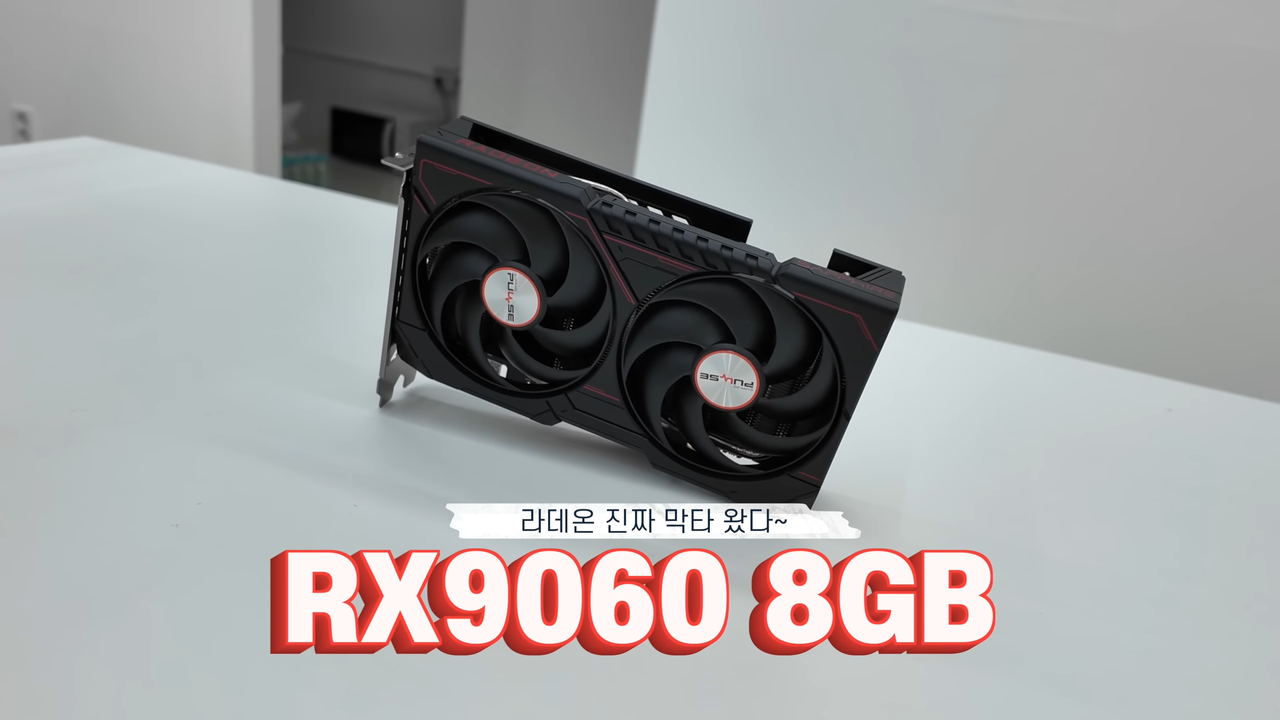
AMD’s new Radeon RX 9060 8GB non-XT is the fifth card in the RDNA 4 family, arriving quietly and without a retail shelf debut. Like the RX 9070 GRE before it, this one is meant for OEM systems—prebuilt rigs you can actually buy in places like South Korea, but not yet in most other markets.
That didn’t stop South Korean YouTuber Technosaurus from cracking open a newly purchased desktop, pulling out the card, and putting it through some benchmarks.
On paper, the RX 9060 is supposed to slot neatly between Nvidia’s RTX 5050 and AMD’s own RX 9060 XT. Under the hood, it’s a cut-down Navi 44 GPU featuring 28 compute units, 1,792 shaders, 28 ray tracing cores, and 8GB of GDDR6 over a 128-bit bus. It runs just shy of 3 GHz, sips about 135 watts under load, and, in this case, came in Sapphire’s compact Pulse variant. The drop from the XT’s 32 CUs doesn’t sound like much, and as it turns out, in practice, it isn’t.
Technosaurus ran the RX 9060 through nine modern games at 1080p with every slider cranked. What emerged was a surprisingly tight race: the RX 9060 landed within 2% of the RTX 5060 and just 6% shy of the RX 9060 XT, which is close enough that you’d need a benchmark overlay to tell them apart, as shown below. The real beatdown came against the RTX 5050, which only managed about 80% of the RX 9060’s frame rates—a gap big enough to see and feel in-game.
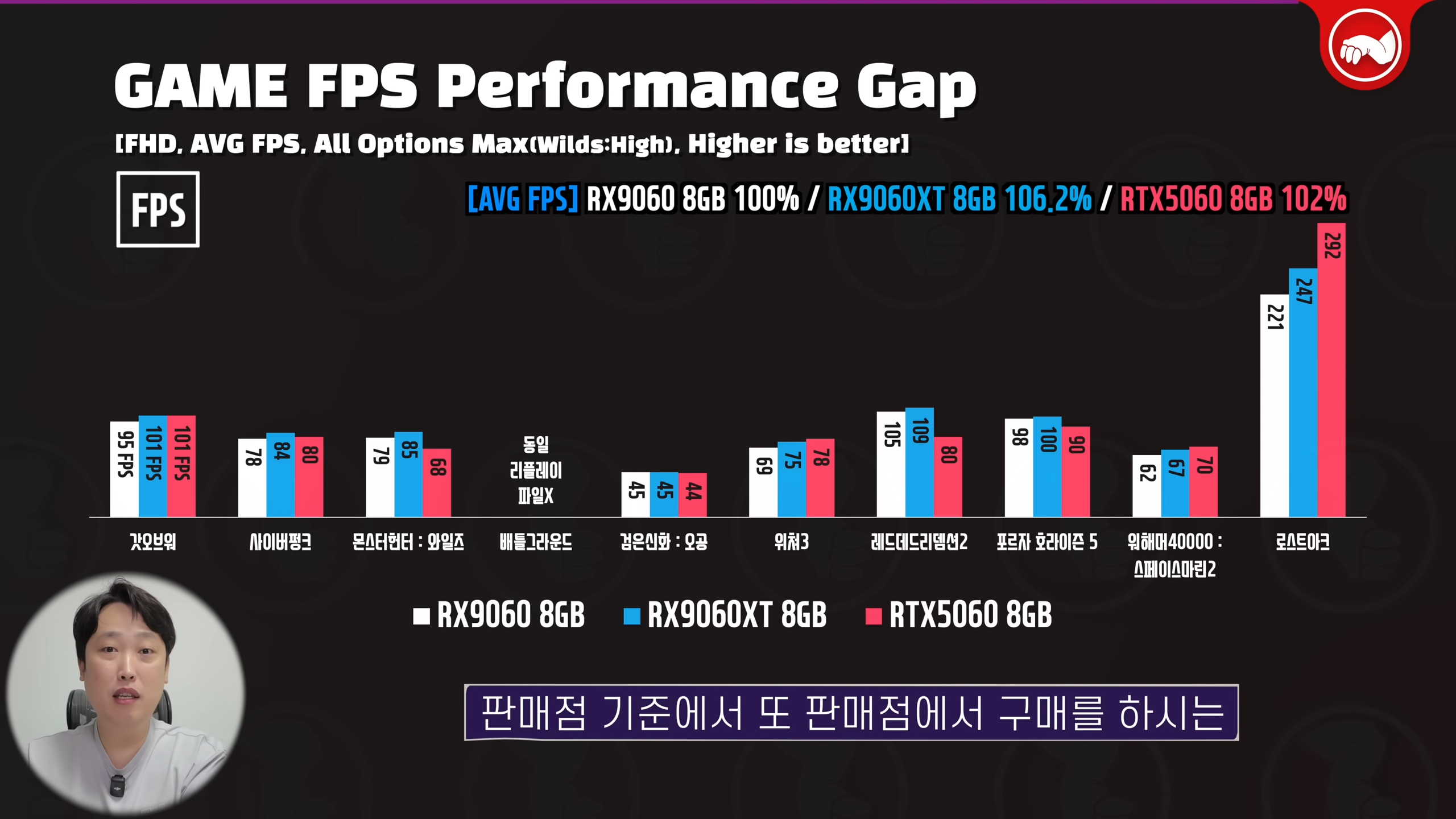
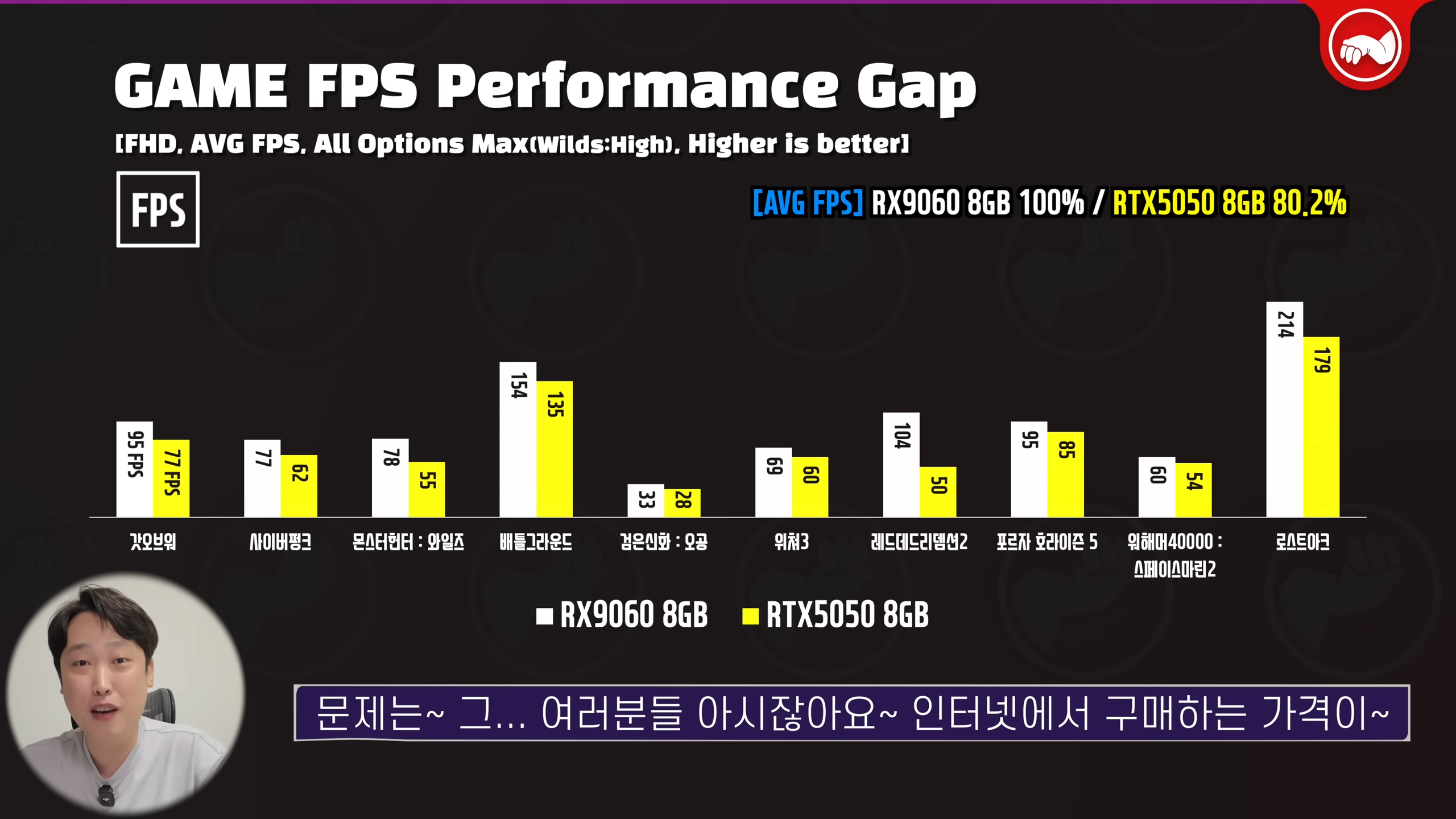
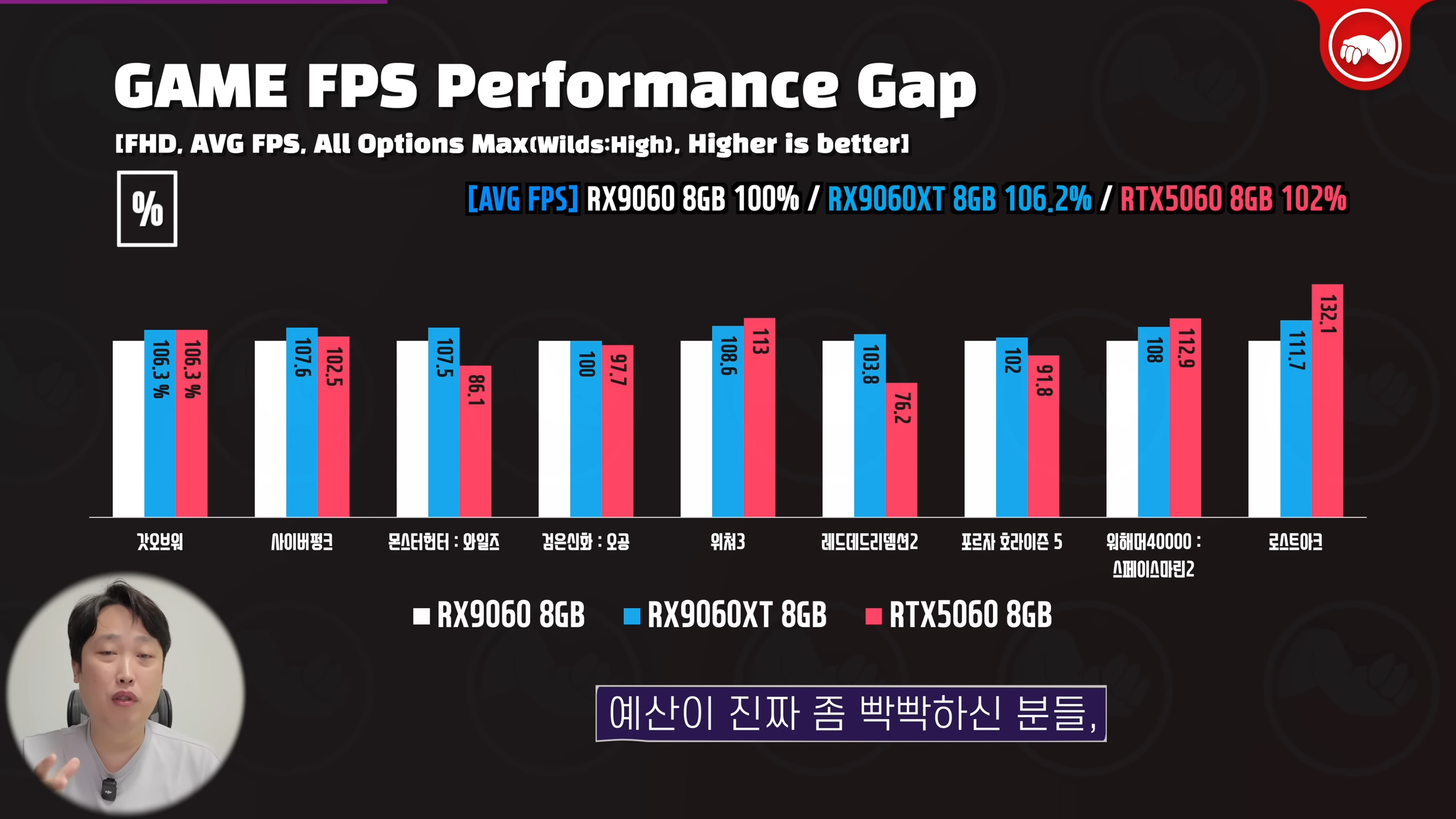
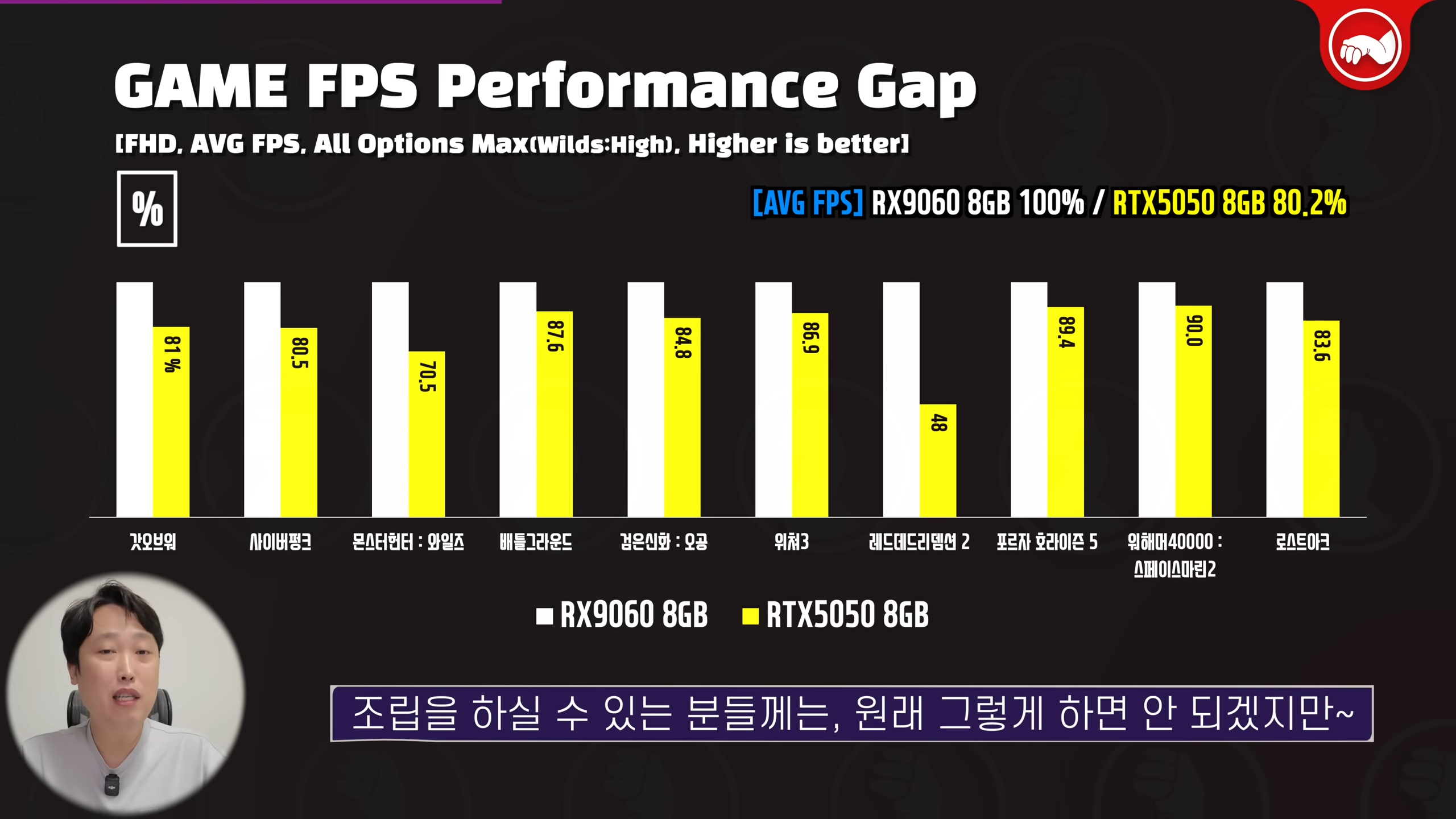

The card’s behavior was also telling. That 3 GHz boost clock isn’t a boost; rather, it’s where the RX 9060 lives during gaming, until the modest power limit nudges it back. According to the host, overclocking isn’t going to net big gains here, but the efficiency is there, and the performance consistency between high-end CPUs like the Ryzen 7 9800X3D and more modest chips like the Ryzen 5 7500F suggests AMD has found a sweet spot for budget builds.
Synthetic benchmarks continue to tell more of the same story. In 3DMark’s Time Spy, the RX 9060 posted 14,132 points; in Fire Strike, 35,511. That’s 38% and 25% faster than the RTX 5050, and still just a hair behind the RTX 5060. Titles like Cyberpunk 2077, God of War (2018), and Warhammer 40,000: Space Marine 2 saw frame rates so close to the 5060 that, for most players, paying extra wouldn’t make sense—at least if you could buy one of these cards off the shelf.
The other catch: the RX 9060 is still an 8GB card in 2025, which means its runway for “ultra” settings in the next wave of games isn’t long, especially if you bring ray tracing into the equation. The 16GB RX 9060 XT will age better (like most 16 GB cards), especially at 1080p, but it costs more and draws more power. If AMD ever brings the RX 9060 to global retail, it could be the value king of this segment, but for now, it’s a quiet OEM-only assassin.
Follow Tom's Hardware on Google News to get our up-to-date news, analysis, and reviews in your feeds. Make sure to click the Follow button.







